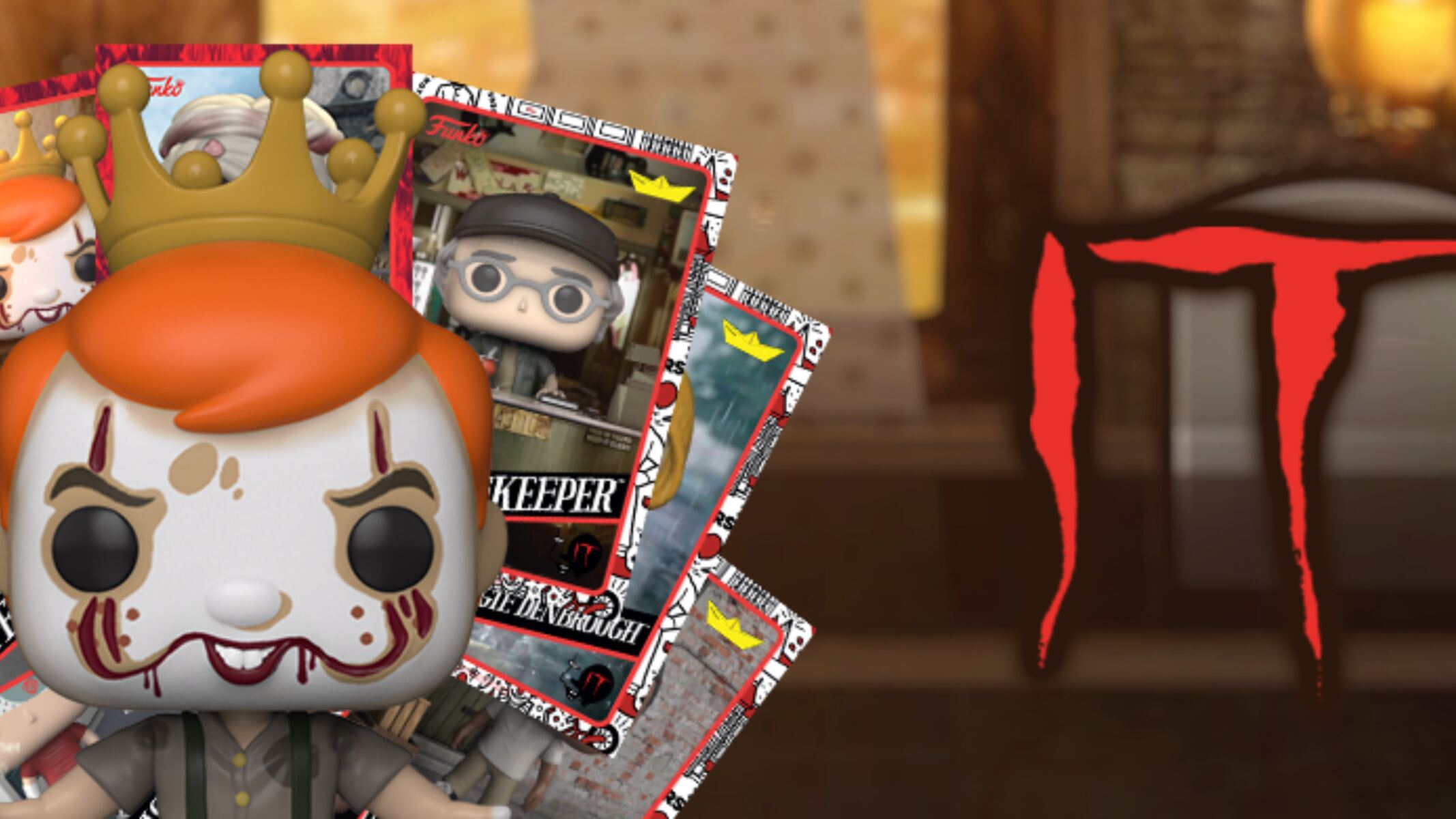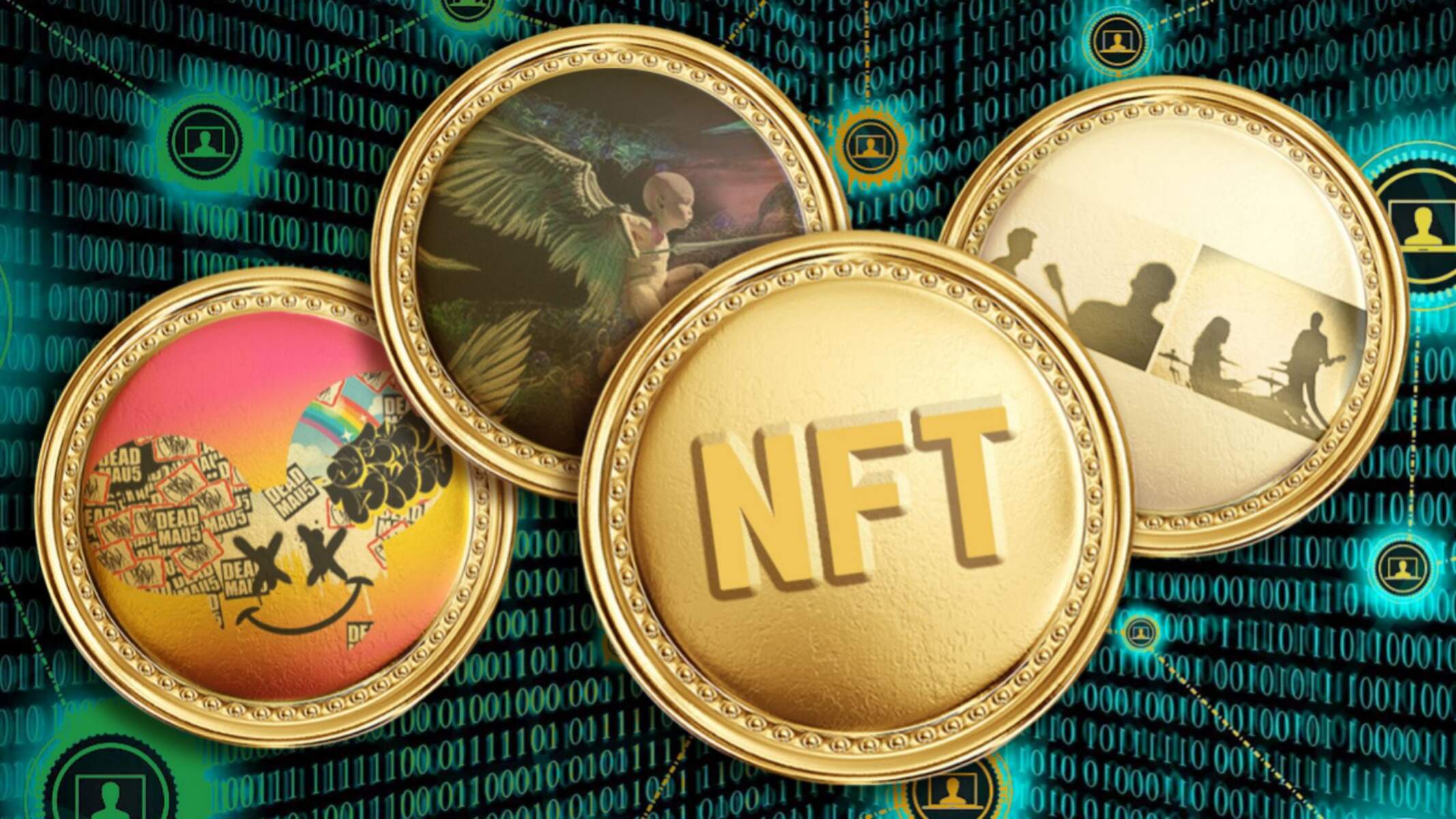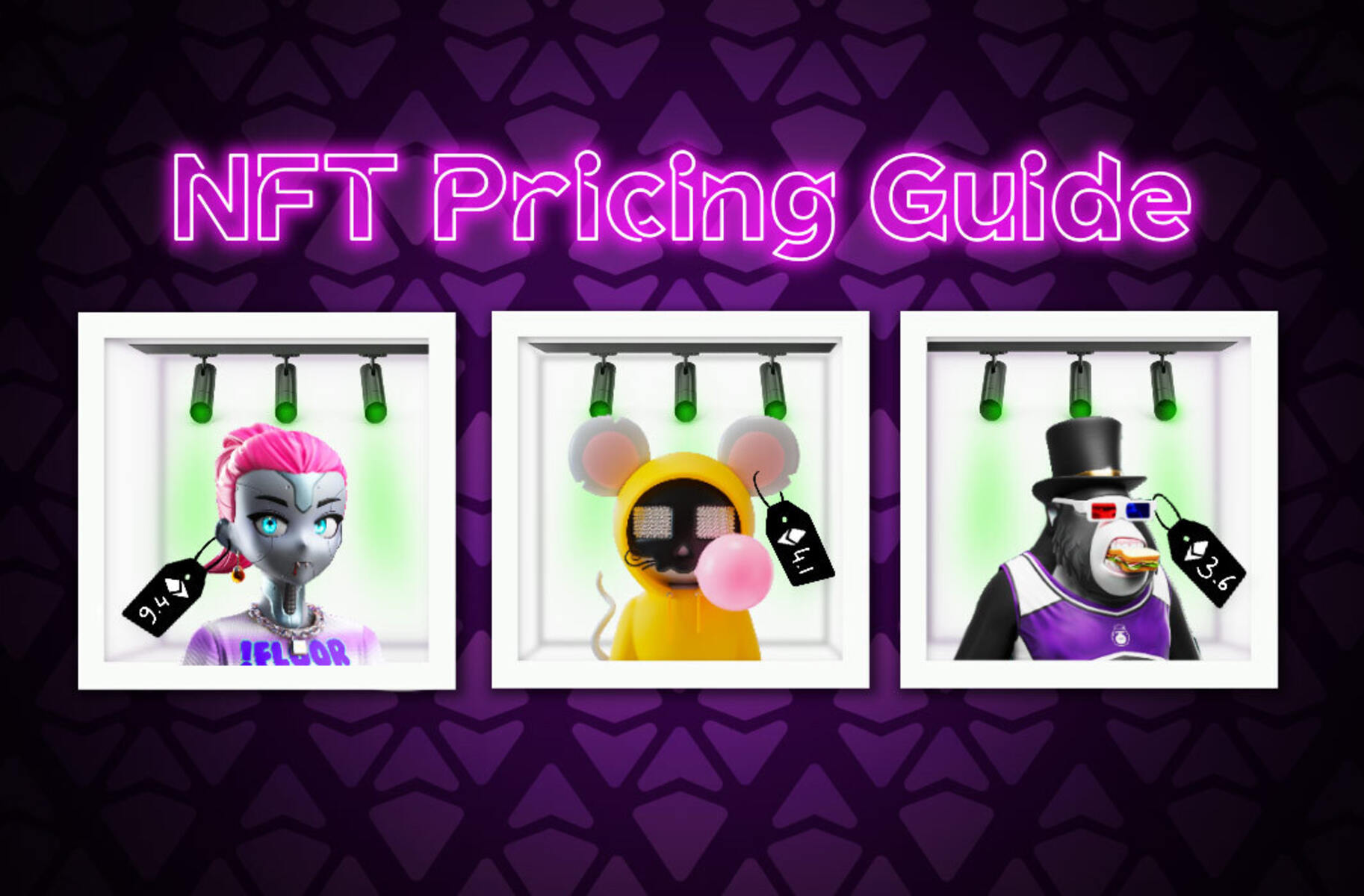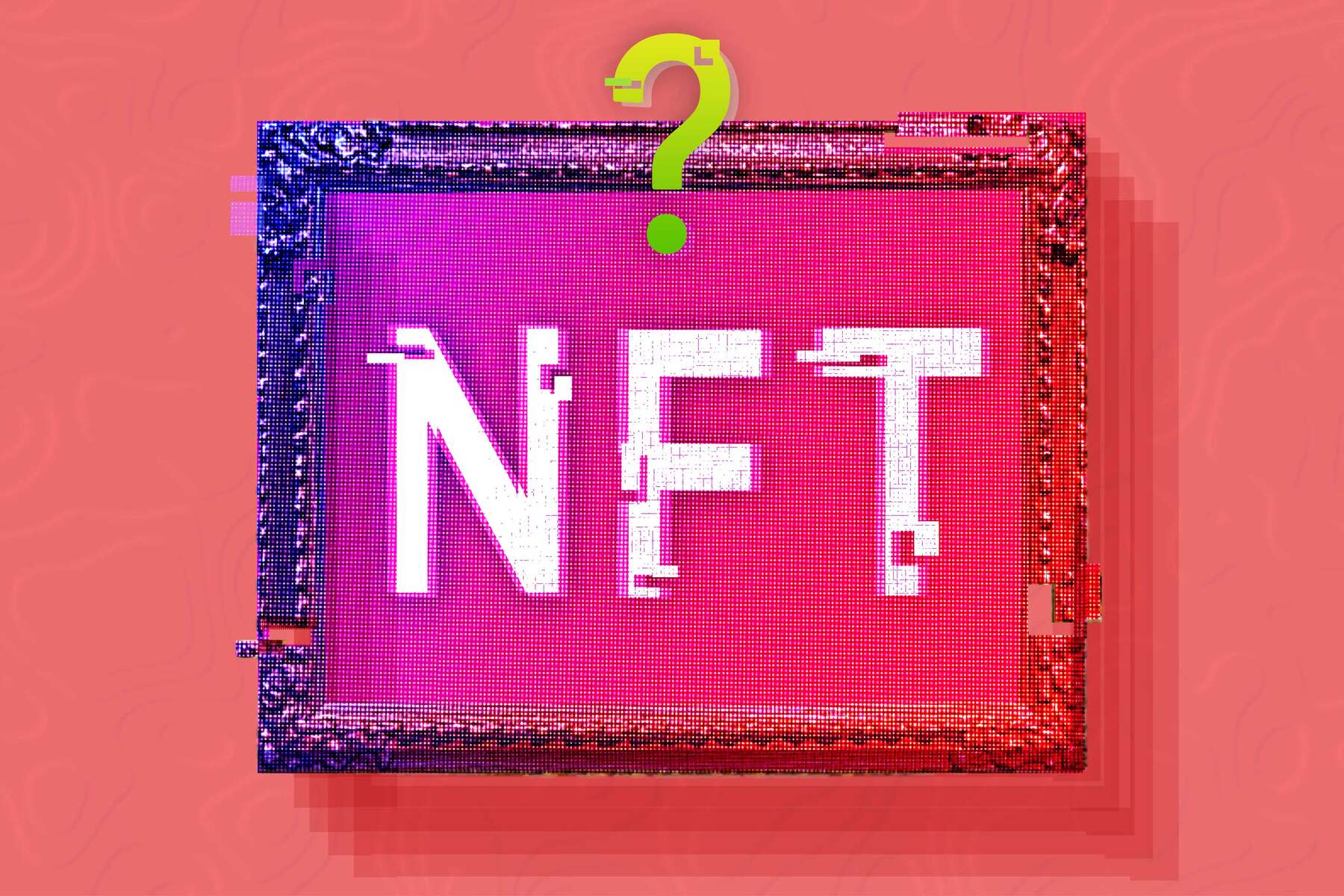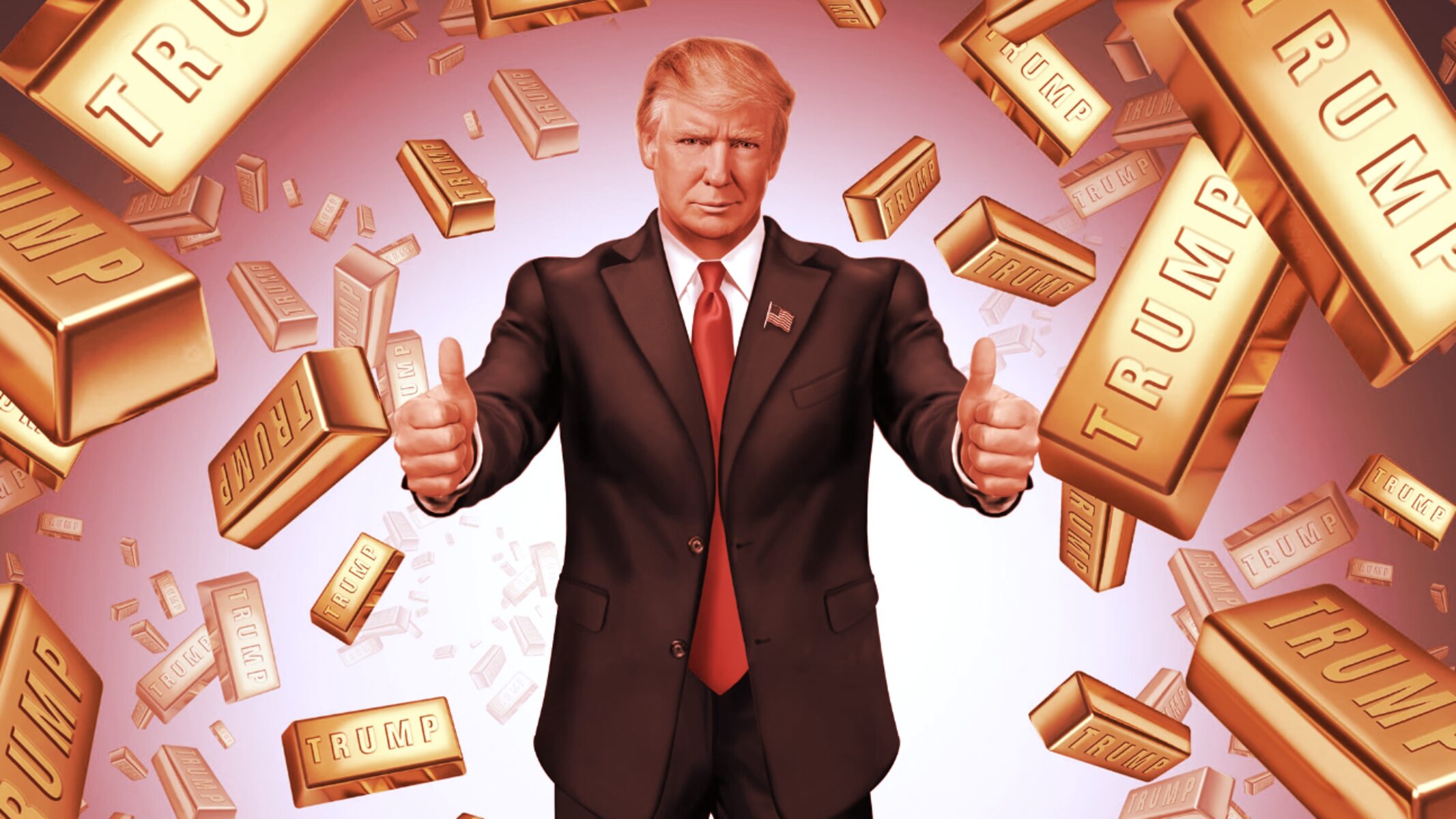What is NFT Rarity?
NFT rarity refers to the uniqueness and scarcity of a particular Non-Fungible Token (NFT). Unlike traditional cryptocurrencies such as Bitcoin or Ethereum, which are fungible and can be exchanged on a one-to-one basis, NFTs are digital assets that represent ownership of a unique item or piece of content, such as artwork, collectibles, or virtual real estate. Each NFT has distinct characteristics that set it apart from others within the same collection or category.
Rarity is a significant factor in determining the value and desirability of an NFT. As with physical collectibles, such as rare stamps or limited edition trading cards, the rarity of an NFT can make it more sought after by collectors and enthusiasts, driving up its price in the market. The concept of rarity adds a layer of exclusivity and scarcity to the digital realm, making NFTs more than just digital files, but rather unique assets with their own intrinsic value.
While rarity can be subjective and vary depending on the specific NFT project or marketplace, there are several factors that contribute to the determination of an NFT’s rarity:
- Attributes and Traits: Some NFTs may have specific attributes or traits that make them rarer than others. These attributes can include things like color variations, animations, or special features.
- Supply and Scarcity: NFT projects often have limited editions or a cap on the total number of tokens available. The lower the supply, the higher the rarity.
- Creator Identity: NFTs created by well-known artists or celebrities may be considered rarer due to the prestige associated with their work.
- Historical Sales and Popularity: NFTs that have a history of high sales or are widely recognized and talked about within the NFT community are often perceived as rarer.
- Community Perception: The demand and perceived rarity of an NFT can be influenced by the community’s perception of its value and desirability.
Determining the rarity of an NFT can be a complex process, and there are various methods and tools available to help collectors and investors in assessing this aspect. In the next sections, we will explore some of these methods in more detail.
Importance of Rarity in NFTs
Rarity plays a crucial role in the world of NFTs, influencing both the value and desirability of these digital assets. Understanding the importance of rarity can be beneficial for collectors, artists, and investors alike. Here are some reasons why rarity matters in the NFT ecosystem:
1. Value Appreciation: Rarity often translates to higher value in the NFT market. Just like with physical collectibles, scarcity drives up demand, leading to increased prices over time. Rare NFTs can become valuable investments, offering the potential for substantial returns.
2. Exclusivity: The scarcity and uniqueness of rare NFTs give them an air of exclusivity. Owning a rare NFT can create a sense of prestige and distinction within the digital art or collectibles community. It allows collectors to showcase their one-of-a-kind assets and stand out from the crowd.
3. Artist Recognition: Rarity can also serve as a gauge of an artist’s success and recognition. Artists who release limited-edition NFTs or have highly sought-after rare pieces are often considered more established and respected in the NFT space. Rarity is a testament to their art’s demand and the value it holds in the eyes of the community.
4. Scarcity Drives Engagement: Rare NFTs often attract significant attention and hype from both collectors and enthusiasts. The limited supply and the race to acquire these assets can generate a buzz and drive engagement within the NFT community. This heightened interest can contribute to the overall growth and development of the NFT market.
5. Investment Opportunities: Rarity in NFTs provides investment opportunities for those looking to capitalize on the market’s growth. By identifying and acquiring rare NFTs early on, investors have the potential to benefit from future price appreciation. Rarity can be a crucial factor in determining which NFTs have the best chances of becoming valuable assets over time.
It is important to note that rarity should not be the sole factor considered when evaluating NFTs. Factors such as the quality of the artwork, the reputation of the artist, and the demand for the content also play significant roles. However, rarity adds a layer of intrigue, excitement, and value to NFTs, making them more than just digital files but unique and prized possessions within the digital world.
Factors Determining NFT Rarity
Several key factors contribute to determining the rarity of an NFT. Understanding these factors can help collectors and investors evaluate the uniqueness and desirability of a particular digital asset. Here are some of the primary factors that contribute to NFT rarity:
- Rarity Tools and Platforms: There are various tools and platforms specifically designed to analyze and assign rarity scores to NFTs. These tools take into account factors such as the number of editions, the number of owners, and other metadata to determine the rarity level of an NFT. Using these tools can provide a quantitative assessment of an NFT’s rarity.
- Investigating the Metadata: NFT metadata can provide valuable insights into an NFT’s rarity. Elements such as edition numbers, scarcity indicators, or unique traits associated with the asset can indicate its rarity level. Analyzing the metadata can help collectors determine the uniqueness and desirability of an NFT.
- Community and Market Perception: The perception of the NFT community and the wider market can significantly influence an NFT’s rarity. If an NFT is highly regarded or sought after by collectors and enthusiasts, it is likely to be considered rare. The buying and selling activity, community discussions, and overall demand for a particular NFT can indicate its rarity within the market.
- Rarity by Scarcity and Supply: The scarcity and supply of an NFT play a vital role in determining its rarity. NFT projects that have a limited number of tokens available or enforce scarcity through time-limited releases create a higher level of rarity. The fewer units available in circulation, the greater the rarity of the NFT.
- Rarity through Traits and Attributes: Some NFTs possess unique traits or attributes that differentiate them from others within the same collection. These traits can include special animations, color variations, or specific features that make an NFT rarer and more desirable. The presence of these distinctive traits contributes to the overall rarity of an NFT.
- Rarity through Artist and Creator Identity: The reputation and recognition of the artist or creator behind an NFT can impact its rarity. NFTs created by renowned artists, celebrities, or established names in the industry often hold greater rarity due to the association with their identity and the prestige attached to their work. The artist’s credibility and influence contribute to the rarity of an NFT.
- Rarity through Historical Sales and Popularity: NFTs that have a history of high sales or are widely known and talked about within the NFT community tend to be perceived as rarer. The popularity and demand generated by previous sales and the overall market reception can elevate the rarity level of an NFT.
It is worth noting that rarity is subjective and can vary between different NFT projects and marketplaces. The combination of these factors, along with individual preferences and market dynamics, ultimately determines the rarity of an NFT.
Method 1: Rarity Tools and Platforms
Rarity tools and platforms have emerged as valuable resources in the world of NFTs, providing collectors and investors with insights into the rarity levels of various digital assets. These tools utilize algorithms and data analysis to assign rarity scores to NFTs based on specific criteria. Here’s how these tools can help determine the rarity of an NFT:
1. Quantitative Assessment: Rarity tools offer a quantitative assessment of an NFT’s rarity. They analyze factors such as the number of editions, the number of owners, and other metadata associated with an NFT to generate a rarity score. This score serves as a numerical representation of how rare the NFT is within its respective collection or category.
2. Comparative Analysis: These tools allow users to compare the rarity scores of different NFTs within a collection. By examining the rarity scores of similar assets, collectors can identify which ones are rarer and potentially more valuable. This comparative analysis provides valuable insights to inform decision-making in the buying and selling of NFTs.
3. Historical Data: Rarity tools often incorporate historical sales data and market trends to further refine their rarity assessments. By considering the past sales performance of an NFT and its overall market reception, these tools account for real-world demand and popularity, which contribute to the asset’s rarity.
4. Enhanced Decision-making: Rarity tools empower collectors and investors to make more informed decisions. By accessing detailed rarity information, individuals can assess an NFT’s potential value and desirability within the market. These insights enable them to identify rare gems and avoid potential pitfalls in the highly competitive NFT space.
5. Transparency and Accessibility: Rarity tools enhance transparency in the NFT ecosystem by providing objective data-driven assessments. They make information about an NFT’s rarity widely accessible, reducing the reliance on subjective opinions or limited expertise. This accessibility democratizes the evaluation process, enabling more individuals to participate and make informed choices regarding NFT rarity.
While rarity tools and platforms are effective in quantifying and analyzing the rarity of NFTs, it’s important to note that they are not the sole determining factors. Collectors should consider other aspects such as the quality of the artwork, the reputation of the artist or creator, and the demand within the market. Rarity tools serve as valuable tools in the broader evaluation process, aiding collectors in their quest for rare and valuable NFTs.
Method 2: Investigating the Metadata
The metadata of an NFT contains valuable information that can shed light on its rarity and uniqueness. By carefully examining the metadata associated with an NFT, collectors and investors can gain insights into its rarity level. Here is how investigating the metadata can help determine the rarity of an NFT:
1. Edition Numbers: The edition number of an NFT indicates how many copies of that particular asset exist. Generally, NFT collections have limited editions, and the lower the edition number, the rarer the NFT. For example, an NFT with the edition number 1 out of 100 is considered rarer than an NFT with the edition number 50 out of 100.
2. Scarcity Indicators: Some NFT projects incorporate scarcity indicators in their metadata to denote rarity. These indicators can include attributes like “Limited Edition,” “Rare,” or “One of a Kind.” When investigating the metadata, take note of these indicators as they can provide valuable information about the NFT’s rarity status.
3. Unique Traits and Attributes: NFTs often possess unique traits or attributes that differentiate them from others within the same collection. These can include special animations, color variations, or specific features that make an NFT stand out and contribute to its rarity. By analyzing the metadata, collectors can identify these distinct traits and gauge the rarity level of the NFT.
4. Ownership Data: The metadata may also include information about the previous and current owners of an NFT. If an NFT has changed hands only a few times or is held by a well-known collector, it can indicate rarity. Additionally, investigating the holder of an NFT can provide insights into its desirability among collectors and its perceived rarity within the community.
5. Additional Descriptive Information: Metadata can provide additional descriptive information about an NFT that may indicate rarity. Details such as the artist’s reputation, the significance of the artwork, or any notable achievements associated with the NFT can suggest a higher level of rarity. Investigating this additional information can help collectors gauge the rarity and value of an NFT.
It is important to note that while investigating the metadata can provide valuable insights, it should be considered alongside other factors such as the demand within the market, the reputation of the artist or creator, and the overall perception of the NFT within the community. Rarity evaluation should be a holistic approach that considers multiple aspects to determine the true rarity of an NFT.
Method 3: Community and Market Perception
The perception of the NFT community and the wider market can significantly influence the rarity and desirability of an NFT. By observing community discussions, market trends, and overall sentiment, collectors and investors can gain insights into the perceived rarity of an NFT. Here’s how community and market perception can help determine the rarity of an NFT:
1. Community Demand: The level of demand for an NFT within the community can indicate its rarity. If an NFT is highly sought after, with collectors eager to own it, it suggests a higher level of rarity. Monitoring community discussions, online forums, and social media platforms can provide valuable insights into the demand and perceived rarity of an NFT.
2. Market Activity: Observing the buying and selling activity surrounding an NFT can offer clues about its rarity. If an NFT frequently sells at high prices or experiences significant trading volume, it suggests strong market demand and perceived rarity. Monitoring platforms and marketplaces where NFTs are traded can provide valuable information about the market activity and perception of an NFT’s rarity.
3. Influencers and Key Figures: Paying attention to the opinions and endorsements of influential figures within the NFT community can provide insights into an NFT’s rarity. If renowned collectors, artists, or industry experts express admiration for an NFT and its rarity, it can influence the overall perception and desirability of the asset.
4. Limited Edition Releases: NFTs that are part of limited edition releases often carry a perceived higher level of rarity. If an NFT project announces a limited number of tokens or a time-limited release, it can generate excitement and contribute to the perceived rarity of the assets within that collection.
5. Media Coverage and Hype: The media coverage and general hype surrounding an NFT can influence its perceived rarity. If an NFT receives significant attention from news outlets, blogs, or social media influencers, it can create a perception of rarity and desirability among collectors and investors. Monitoring media coverage and the overall buzz surrounding an NFT can provide valuable insights into its perceived rarity.
While community and market perception can be influential, it’s important to consider other factors as well, such as the quality of the artwork, the scarcity of the NFT, and the reputation of the creator. Evaluating rarity should be a comprehensive process that takes into account various aspects to determine the true rarity and desirability of an NFT.
Method 4: Rarity by Scarcity and Supply
Scarcity and supply play a significant role in determining the rarity of an NFT. The limited availability of an NFT contributes to its desirability and perceived rarity. Evaluating the scarcity and supply of an NFT can provide insights into its rarity level. Here’s how rarity can be assessed through scarcity and supply:
1. Limited Editions: Many NFT projects release limited editions of their digital assets. These limited editions are often created with a predetermined cap on the number of tokens available. The lower the number of tokens in circulation, the higher the rarity of the NFT. Limited editions create an inherent scarcity that drives up demand and increases the NFT’s rarity.
2. Time-Limited Releases: Some NFT projects opt for time-limited releases, where the NFTs are available for a specific duration, after which they are no longer minted or sold. This strategy creates a sense of urgency among collectors and investors, driving the perceived rarity of the NFT. Time-limited releases restrict the supply, increasing the rarity of the assets.
3. Exclusive Drops: Exclusive drops where NFTs are available to a select group of individuals or through invitation-only events enhance the rarity of the assets. By limiting access to specific collectors or community members, the supply is restricted, contributing to the rarity and desirability of the NFTs.
4. Token Burn or Destruction: Some NFT projects employ token burn or destruction mechanisms where a certain percentage of the NFTs are intentionally removed from circulation. This reduction in supply enhances the rarity of the remaining tokens, increasing their value and perceived scarcity.
5. Rare Traits or Attributes: Some NFTs have rare traits or attributes that contribute to their scarcity. For example, an NFT with a unique color variant, special animation, or specific features that are only present in a limited number of tokens within a collection is considered to be rarer. The scarcity of these unique traits adds to the overall rarity of the NFT.
It is important to note that evaluating rarity based on scarcity and supply should be done in conjunction with other factors, such as market demand, the quality of the artwork, and the reputation of the creator. Rarity assessment should consider the interplay of multiple elements to determine the true rarity and desirability of an NFT.
Method 5: Rarity through Traits and Attributes
The distinct traits and attributes of an NFT can significantly contribute to its rarity and desirability. Certain characteristics unique to an NFT make it stand out from others in the same collection, enhancing its perceived rarity. Evaluating an NFT’s traits and attributes can provide insights into its rarity level. Here’s how rarity can be assessed through traits and attributes:
1. Color Variations: Some NFT collections offer color variations of their assets, where each variant has a different color scheme. Certain color variations may be rarer than others, creating a higher level of rarity and desirability. Collectors often express preferences for specific color variants, further influencing the rarity and value of an NFT.
2. Special Animations: NFTs that feature unique animations or interactive elements can be regarded as rarer due to the additional level of creativity and technical expertise involved. These special animations make the NFTs more engaging and exclusive, leading to increased rarity and demand within the market.
3. Limited Features: Some NFTs may have limited features or functionalities that are exclusive to a select number of tokens. These features can include access to exclusive content, special abilities within a game, or enhanced utility. NFTs with limited features are considered rarer as they offer additional value beyond the standard assets.
4. Unique Attributes: NFT collections may incorporate unique attributes, such as rare traits or special design elements, that differentiate certain tokens from others. These unique attributes can include traits like background scenery, clothing variations, or accessories specific to an NFT. The presence of these exclusive attributes increases the rarity and desirability of the NFT.
5. Special Editions or Collaborations: NFTs that are part of special editions or collaborations with renowned artists, celebrities, or well-known brands often hold higher rarity. Associating an NFT with an influential figure or a prestigious partnership adds to its perceived value and rarity within the market.
When assessing rarity through traits and attributes, it’s important to consider their impact on both the aesthetic and functional aspects of the NFT. Rarity derived from traits and attributes should be evaluated alongside other factors such as market demand, scarcity, and the reputation of the creator. Evaluating multiple dimensions provides a more comprehensive understanding of an NFT’s true rarity and desirability.
Method 6: Rarity through Artist and Creator Identity
The reputation and identity of the artist or creator behind an NFT can significantly influence its rarity and perceived value. NFTs created by well-known artists or established creators often hold higher rarity due to the association with their identity and the perceived excellence of their work. Here’s how rarity can be assessed through artist and creator identity:
1. Established Reputation: Artists or creators with an established reputation in the traditional art world or other creative industries bring their established following and expertise to the NFT space. The rarity of NFTs created by such artists is enhanced by their recognized talent and the prestige associated with their work.
2. Influential Figures: NFTs associated with influential figures, celebrities, or recognized industry leaders often hold higher rarity and desirability. The association with these figures elevates the perceived value and collectors’ interest in owning an NFT linked to their identity.
3. Notable Collaborations: Collaborations between artists or creators with different backgrounds or expertise can result in exceptional and unique NFTs. These collaborative works bring together diverse perspectives and skill sets, contributing to the rarity and allure of the NFTs they produce.
4. Limited Edition Releases: Artists or creators may release NFTs as limited editions, with a cap on the number of available tokens. This limited availability adds to the rarity and exclusivity of the NFTs. The association with a prominent artist or creator in a limited edition release further enhances the perceived rarity and desirability of these NFTs.
5. Established Collectors Base: Artists or creators known for their strong collector base and high demand for their artworks in other mediums are likely to experience the same level of demand for their NFTs. The association with an artist or creator who already has loyal and enthusiastic collectors can contribute to the rarity and market value of their NFTs.
While rarity through artist and creator identity is important, it should be considered alongside other factors such as the artistic quality of the NFT, the demand within the market, and the overall desirability among collectors. Evaluating rarity in NFTs involves a holistic approach that considers multiple dimensions to determine the true rarity and value of an NFT.
Method 7: Rarity through Historical Sales and Popularity
The historical sales performance and popularity of an NFT can provide valuable insights into its rarity within the market. By examining previous sales data, market trends, and overall demand, collectors and investors can gauge the perceived rarity and desirability of an NFT. Here’s how rarity can be assessed through historical sales and popularity:
1. High Sales Records: NFTs that have a history of high sales and impressive price records are often seen as rare and valuable. If an NFT has consistently achieved significant sales figures in the past, it indicates strong demand and perceived rarity among collectors.
2. Popular Collections: NFT collections that have gained popularity and attracted a large number of collectors are likely to have a higher perception of rarity. When a collection becomes widely recognized and generates substantial interest within the community, the NFTs within that collection are associated with rarity based on their popularity.
3. Recognized Artists or Creators: NFTs created by renowned artists or creators who have a strong following and recognition in the art world are often considered rare. The historical success and reputation of these artists contribute to the perceived rarity and desirability of their NFTs.
4. Trends and Hype: Monitoring market trends and hype surrounding certain NFTs can indicate their perceived rarity. NFTs that generate significant buzz within the community and gain widespread attention in the media may be regarded as rarer due to their popularity and influence within the market.
5. Historical Market Demand: Analyzing the historical market demand for an NFT can provide insights into its rarity. If an NFT consistently receives high trading volume and attracts a large number of buyers and sellers, it signifies its perceived rarity and desirability within the market.
It is essential to note that while historical sales and popularity can be indicators of rarity, they should not be the sole determining factors. Evaluating rarity based on historical data should be done in conjunction with other factors such as the quality of the artwork, the reputation of the artist or creator, and the unique attributes of the NFT. Assessing rarity requires a comprehensive approach that considers multiple dimensions to determine the true rarity and value of an NFT.
How to Determine Rarity of an NFT
Determining the rarity of an NFT can be a multi-faceted process that requires careful evaluation of various factors. By considering these factors and employing different methods, collectors and investors can gain insights into the rarity and desirability of an NFT. Here are some methods to determine the rarity of an NFT:
1. Utilize Rarity Tools and Platforms: Rarity tools and platforms are specifically designed to analyze and assign rarity scores to NFTs. These tools consider factors like edition numbers, ownership data, and other metadata to generate quantitative assessments of an NFT’s rarity. Utilizing these tools provides objective insights into the rarity level of an NFT within its respective collection or category.
2. Investigate the Metadata: The metadata associated with an NFT contains valuable information that can indicate its rarity. Analyzing elements like edition numbers, scarcity indicators, and unique traits or attributes provides insights into the uniqueness and desirability of an NFT.
3. Consider Community and Market Perception: Monitoring the opinions and discussions within the NFT community, as well as observing market trends and demand, can reveal the perceived rarity of an NFT. If an NFT is highly sought after and generates significant attention or is endorsed by influential figures, it indicates a higher level of rarity.
4. Evaluate Scarcity and Supply: Assessing the scarcity and supply of an NFT is crucial in determining its rarity. Limited edition releases, time-limited drops, and the overall supply of an NFT contribute to its perceived rarity. The lower the availability and higher the demand, the rarer the NFT is considered.
5. Analyze Unique Traits and Attributes: The presence of unique traits, such as color variations, special animations, or limited features, can enhance the rarity of an NFT. NFTs that possess distinct characteristics are often regarded as rarer and more desirable.
6. Consider the Artist or Creator Identity: The reputation and recognition of the artist or creator behind an NFT can influence its rarity. NFTs created by established artists, well-known figures, or those involved in notable collaborations often hold higher rarity due to their association with the artist’s identity and expertise.
7. Assess Historical Sales and Popularity: Examining the historical sales performance and popularity of an NFT provides insights into its perceived rarity. NFTs with high sales records, popular collections, and success within the market indicate a higher level of rarity and desirability.
It is important to note that while these methods are valuable, rarity evaluation should be approached holistically, considering multiple factors such as market demand, the quality of the artwork, and the overall reputation and perception within the NFT community. By combining different methods and considering the broader context, collectors and investors can make informed decisions regarding the rarity and value of an NFT.











